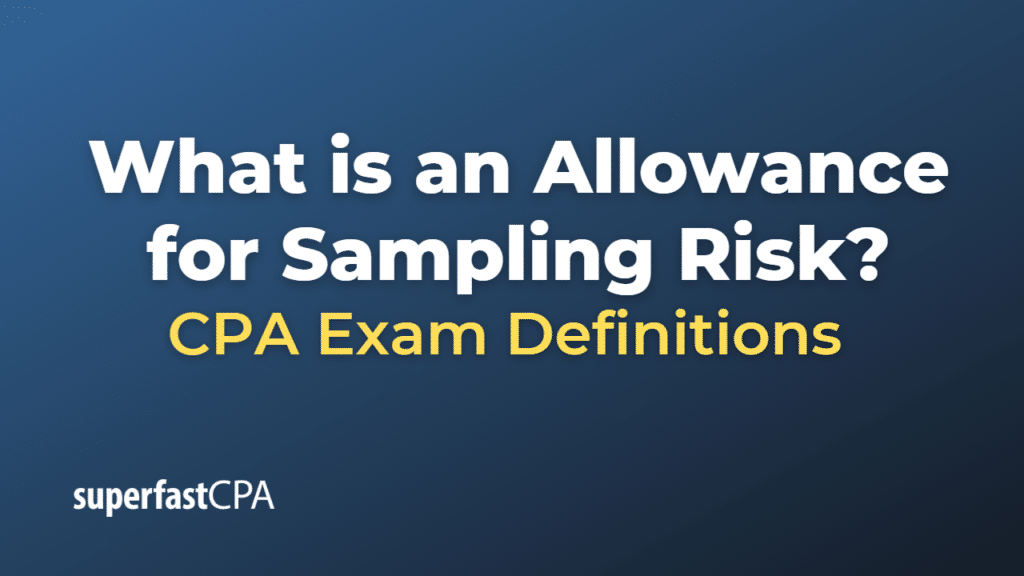Allowance for Sampling Risk
An allowance for sampling risk is a concept used in statistical sampling and auditing. It represents the margin of error that is acknowledged when an auditor uses a sample of a larger population to draw conclusions about the entire population. In other words, it is the range within which the true population value is likely to fall, given the inherent uncertainty and limitations of using a sample rather than examining the entire population.
The allowance for sampling risk takes into account the variability that can arise when using a sample to make inferences about a larger population. It is essential for auditors to consider this allowance when making decisions based on their sample findings, as it helps them to estimate the likelihood of the results being accurate and representative of the whole population.
Example of an Allowance for Sampling Risk
Let’s consider an example of an auditor reviewing a company’s accounts receivable to ensure that the reported receivables are accurate and collectible.
The company has 10,000 invoices, with a total accounts receivable value of $1,000,000. The auditor selects a random sample of 100 invoices, with a total value of $110,000. After examining the sample, the auditor determines that the actual collectible amount is $105,000, indicating a $5,000 discrepancy due to doubtful accounts.
In this case, the auditor cannot directly conclude that the entire accounts receivable of $1,000,000 has a discrepancy of 5% (i.e., $50,000), as this would ignore the sampling risk.
To account for the sampling risk, the auditor calculates an allowance for sampling risk, which gives a range within which the true population value is likely to fall. For example, after considering the variability in the sample, the auditor might determine that the true discrepancy in the population could range between 3% and 7% with a 95% confidence level.
Based on this allowance for sampling risk, the auditor can estimate that the actual discrepancy in the company’s total accounts receivable lies within a range of $30,000 (3% of $1,000,000) to $70,000 (7% of $1,000,000). This range helps the auditor to better evaluate the results and make informed decisions about the accuracy of the company’s financial reporting. If necessary, the auditor may decide to increase the sample size or perform additional testing to reduce the sampling risk and obtain a more accurate estimate.













